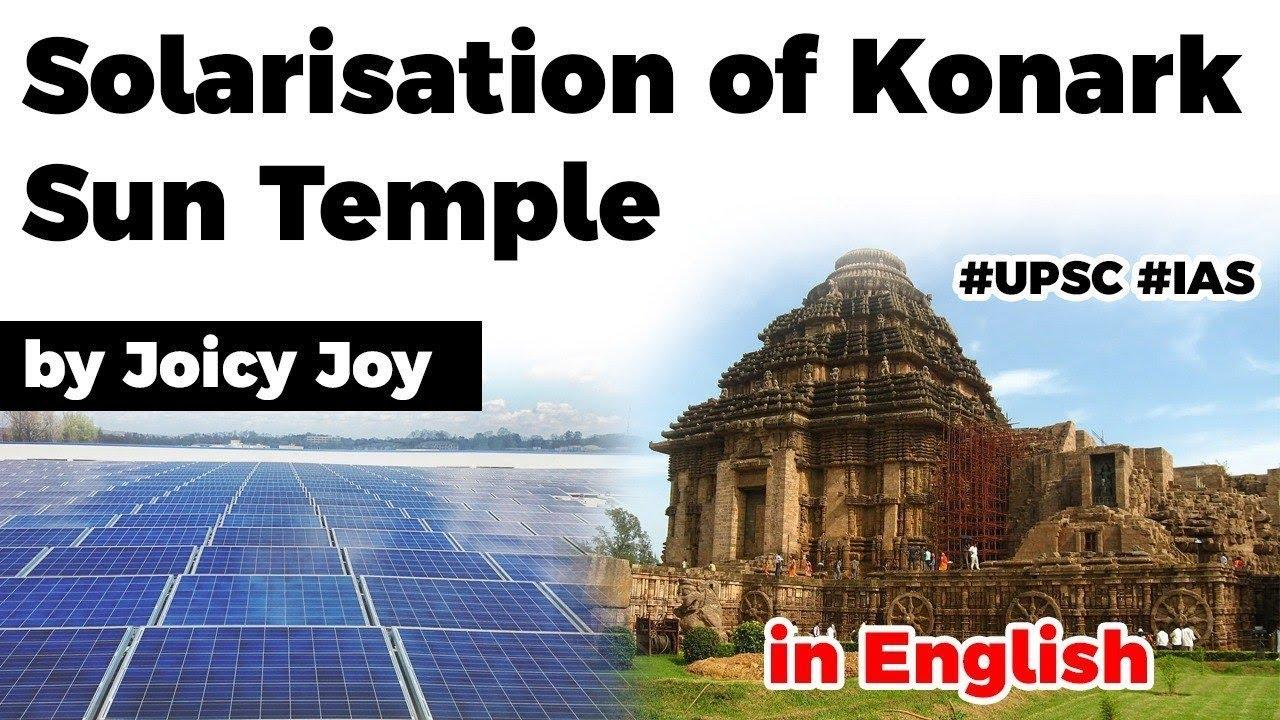Table of Contents
- The Government of India has launched a scheme for 100% solarisation of Konark sun temple and Konark town in Odisha.
- The scheme will meet all energy requirements of Konark town with solar energy.
- Plan: It envisages setting up of the 10-MW grid connected solar project and various solar off-grid applications such as solar trees, solar drinking water kiosks and off-grid solar power plants with battery storage.
- Funding: 100% Central Financial assistance (CFA) support of around Rs. 25 crore through the Ministry of New and Renewable Energy.
- Implementation Agency: Odisha Renewable Energy Development Agency.
Konark Temple
- Konark was built by King Narasimhadeva I of the Ganga Dynasty (1238-1264AD) in the 13th century and is located in Eastern Odisha near the sacred city of Puri.
- The temple is designed in the shape of a colossal chariot. It is dedicated to the sun God.
- There are two rows of 12 wheels on each side of the Konark sun temple.
- The seven horses are said to symbolize the seven days of the week.
- The temple was used as a navigational point by European sailors. They referred to it as the ‘Black Pagoda’ due to its dark colour and its magnetic power that drew ships into the shore and caused shipwrecks.
- It is the culmination of Odisha temple architecture.
- It was declared a UNESCO world heritage site in 1984.
- The main architectural features of Odisha temples are classified into three orders, i.e., rekhapida, pidhadeul and khakra.
- Most of the main temple sites are located in ancient Kalinga—modern Puri District, including Bhubaneswar or ancient Tribhuvanesvara, Puri and Konark.
- In general, the shikhara, called deul in Odisha, is vertical almost until the top when it suddenly curves sharply inwards.
- Deuls are preceded, as usual, by mandapas called jagamohana in Odisha.
- Odisha temples usually have boundary walls.
- The ground plan of the main temple is almost always square, which, in the upper reaches of its superstructure becomes circular in the crowning mastaka.
- Compartments and niches are generally square, the exterior of the temples are lavishly carved, their interiors generally quite bare.
- At Konark, on the shores of the Bay of Bengal, lie the ruins of the Surya or Sun temple built in stone around 1240.
- The Sun temple is set on a high base, its walls covered in extensive, detailed ornamental carving.
- These include twelve pairs of enormous wheels sculpted with spokes and hubs, representing the chariot wheels of the Sun god who, in mythology, rides a chariot driven by seven horses, sculpted here at the entrance staircase.
Latest Burning Issues | Free PDF

























 WhatsApp
WhatsApp